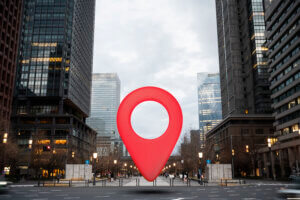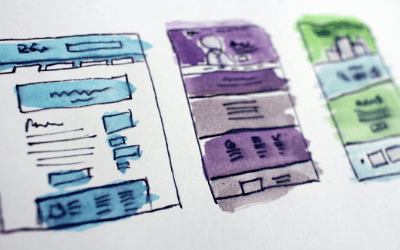Open up an online business, they said. It will be easy, they said. Well, it would appear that “they” slept through marketing 101. In spite of having an excellent product or service, the items are not flying off the shelves. What gives?
Why You Need a Sales Funnel
There is more to a sale than meets the eye. While there are undoubtedly impulse buyers who stumble over your website, see your product, love it, and buy it right then and there, they are in the minority. Instead, selling is a process that has multiple stages.
To accommodate the process and connect with customers at each stage of the buying, the savvy entrepreneur builds an online sales funnel. Do it correctly, and it will convert qualified leads 24/7. Learn what a sales funnel is, what components are involved, how to create your own, and start converting more customers online!
No, the Online Sales Funnel Does Not Have to Be Difficult!
Do you remember the buyer who stumbled across your product and bought it right away? They went through all the steps of the sales funnel at one time. Let’s break it down. The sales funnel represents the different stages of the decision-making process.
A Broad Funnel Definition
At the top, there is the target audience. These qualified shoppers fall into the demographic that typically buys the products you sell. Now, the funnel narrows a little to include only the potential buyers. These folks have a current need for the product and the money to buy.
The last stage is the bottom of the funnel. It is the narrowest and consists of new and existing customers. The goal is to move the shopper through the process and convert them to a paying customer. Sounds easy, right?
Verdi’s Aida Has 4 Acts; Kind of Like a Marketing Sales Funnel
Marketing gurus, such as those at the Journal of Marketing, have spent countless decades trying to divine consumer behavior. Models have been created and discarded. One model that is sticking around (for good reason) is the AIDA concept.
- Awareness. Your product catches the eye of the online shopper. Maybe they saw a sponsored post on Facebook or ran across your name during a Google search. Since they did not click away immediately, they are now a prospective shopper.
- Interest. Because you have given the shopper a chance to download a free e-book or sign up for an email newsletter, the prospective shopper becomes a lead. They are showing interest in your brand, product, or advertising.
- Decision. Courting the lead with coupon codes, special offers, and limited-time discounts moves the lead farther down the sales funnel. They are almost ready to buy! It is up to you to close the deal at this juncture.
- Action. The lead becomes a buyer. You have been looking for this action! They clicked “buy” and have a credit card in hand. However, you are not yet done. A lot can still go wrong. You do not want them to abandon a full cart.
It is interesting to note that you could make the sales funnel a lot more complicated with added graphics, steps, and a bunch of other tidbits you remember reading about on other websites. But why would you?
How to Create a Secret Funnel Strategy That Converts Shoppers into Buyer
What will it take to move the customer down the funnel? How do you get them from kicking tires to taking the test drive and buying the car?
Hone Your Advertising Message and Social Media Outreach to Generate the Right Type of Awareness
We are not saying that you should turn away prospective shoppers. What we are saying is that you should slightly narrow the gate of the funnel. For example, where are your competitors failing to meet customer needs? How does your business meet this specific need? These are great jumping-off points for fine-tuning your advertising message to get the right prospective shoppers into the top of the funnel.
Keep Interest Hot with High-Quality Web Copy and Opportunities for Brand Interactions
Meaningful website content is the key for moving the shopper through the funnel. What do your product pages look like? Do they anticipate the questions of the customer? Do they offer plenty of specs and little fluff? Are there helpful links to your YouTube channel, blog, or how-to content
Relevant Content Leads to a Decision
If you have ever read a recipe online, you will have encountered the disheartening setup that has you scrolling . . . scrolling . . . scrolling through a bunch of fluff and back-story. Do not make this mistake with your product page! Instead, place any information a buyer looks for near the top.
If the buyer clicks on a particular item’s description, the link should lead to the actual description – not a lengthy history of the item. When the customer is ready to take action, information is king. Jumping around your website to find it should be a snap. In fact, if you are smart with the emails you send out to interested consumers, you may get click-throughs right there!
Keep the Action Going
Affirm your buyer’s desire for acceptance, recognition, and sense of belonging. Congratulate them on their purchase. Show them how they have made a difference. In some ways, this is what the Harvard Business Review means when it takes about integrating sales and marketing.
Then, give them more opportunities to do so again in the future. Reward customers for buying more, make returns easy, offer tech support, be just a quick email away and, besides that, maintain the relationship with excellent blogs, newsletters, questionnaires, and clever social media content that is too good not to share.
Final Thoughts on Creating a Working Online Sales Funnel
There are a lot of moving parts here. For example, should you set up an online shopper network that receives personalized content or give each buyer an opportunity to receive targeted emails they can change at any time? What would it take to put together a Facebook community that speaks to your brand?
There is no shame in asking for help. In fact, it is a step that entrepreneurs in the know take every single day. Contact us today to do exactly that!






